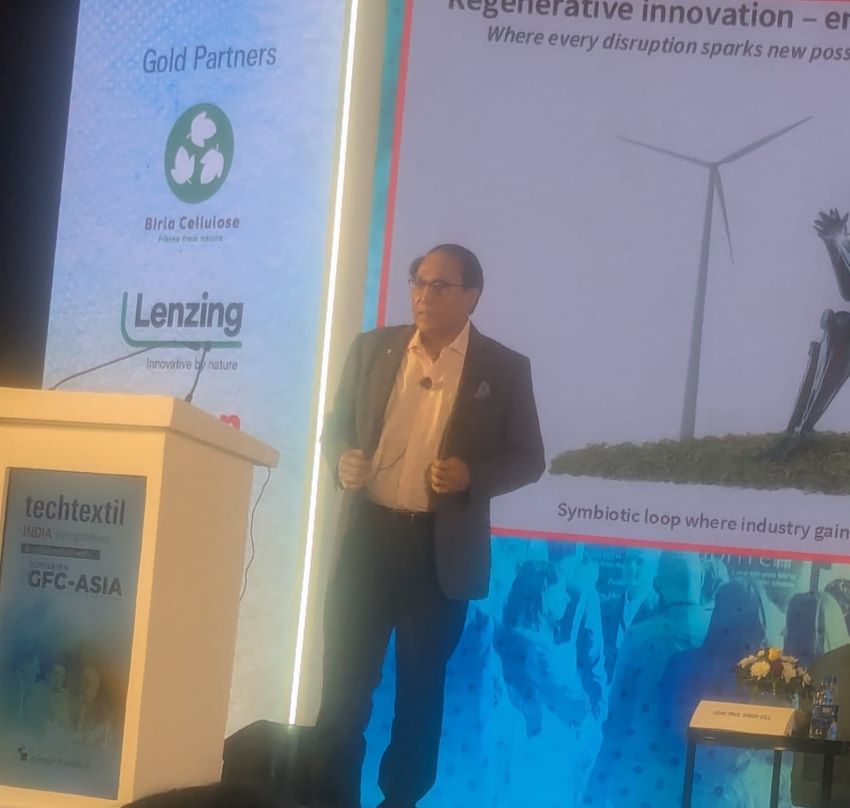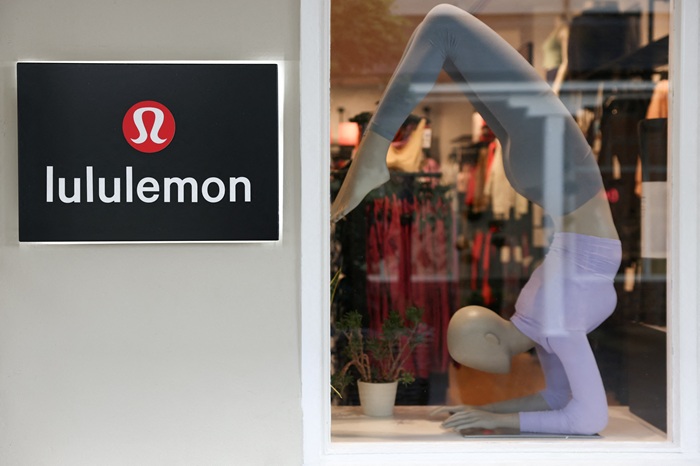FW
A recent study published by the Tunisian Forum for Economic and Social Rights (FTDES) reveals, the textile and clothing sector in the country is in a fragile state and not in tune with international changes. Surprisingly, after having been the leader of Tunisian exports, the sector continues to decline to the point that the whole economy suffers.
This is indeed a sad statement from a high employability sector given its low competitiveness that is no longer able to face global competition. This strongly impacts on the wages of labour, mainly women. Not to mention that this precarious condition of the industry is largely due to the crisis in the eurozone which has significantly altered the security situation and stability in Tunisia, particularly after the revolution. This led many investors to leave the country and bring down investments in the sector, according to FTDES.
Surprisingly, the number of companies in the sector fell sharply to 2,500 in 2005 and 1,907 in 2012. The number of job posts also decreased from more than 250,000 prior to 2005 to 185,000 in 2012, added the study that was conducted on a sample of 28 industrial enterprises specialized in the field of garment for export spread over the various delegations of the governorate of Monastir and 260 women working in the textile sector.
Europe’s textile and clothing sector will boost competitiveness through the EU regional Smart Specialisation Strategies and a better connection of regional innovation clusters.
Over 100 participants from 23 regions across 19 EU countries attended the public launch of the RegioTex initiative held recently at the Committee of the Regions in Brussels. The event co-organised by the European Technology Platform for the Future of Textiles and Clothing (Textile ETP) and EURATEX - the European Apparel and Textile Confederation, was embedded in the 11th annual public conference of the Textile ETP.
The RegioTex initiative brings together stakeholders from the textile, clothing and related industries, their research, technology and education providers as well as public authorities and agencies in a joint effort to develop and implement strategies that will facilitate and accelerate the emerging industrial renewal in traditional manufacturing regions across Europe. The goal is to strengthen the regional textile innovation capacities and to establish effective European collaboration and peer-to-peer learning between regional actors.
With the revised EU Regional and Cohesion Policies for the period 2014-2020, Europe’s regions will have some €110 billion available to spend on research and innovation-related activities based on their regional Smart Specialisation Strategy (RIS3). It is expected that these top-down RIS3 policies and programmes will reach the greatest impact on regional industrial competitiveness, innovation performance and job creation potential if they are implemented in a close partnership with the regional innovation actors organised in a bottom-up approach.
Texprocil, the first Export Promotion Council set up in India in the year 1954, and responsible for promoting Cotton Textile exports from India held a function recently in Mumbai to release an Ernst Young Study report on ‘Textile Industry as a vehicle of job creation for inclusive growth.’ The event was attended by the leading industry heads in the textile and clothing industry.
R. K Dalmia, Chairman, Texprocil mentioned that there were 3 objectives in undertaking the study. Firstly, to map the top 20 textile products in demand in major importing countries in comparison to what India is supplying to these markets and thereby analyze reasons for mismatch in demand & supply, if any, and chalk out suitable corrective action to be taken up by the industry.
He also reiterated the importance of finalisation of FTAs with EU, Australia and Canada in addition to negotiation of concessional tariff with China to highlight the impact of business being lost to other competing countries owing to tariff disadvantage faced by the Indian suppliers.
Thirdly, he said that this study was done to clearly bring out the employment potential of the textile sector, especially in rural India by developing non-migratory models of manufacturing like the ‘hub & spoke’ model being popularised in countries like Bangladesh, Cambodia & Myanmar.
The study was done by conducting primary research in various production centres and also by one-to-one meetings with manufacturers and exporters of fabric and home textiles in small, medium and large scale sectors, he said.
Leading members from all sectors of the textile industry will form the jury to select the products that will feature in ISPO Textrends at ISPO Munich 2018. What is clear at this jury meeting was the increased creativity and an eye for finish. ISPO Textrends received a record 512 products for Fall/Winter 19/20 covering 10 sectors, including base layer to outer, street sports, insulation and trims. The Eco Era section was well accounted for, but it was clear that the eco and sustainable trends are fast becoming the norm in the textile industry.
David Shah, Editor in Chief, VIEW noted, “Innovation is the new word and if they are going to survive they have to innovate and they are really understanding innovation.” One sector that caught the attention of the jury was membranes and coatings. New developments including reflective changeant effects through to abstract prints being coated and super light rip stops as well as eco-friendly applications appealed to members of the jury.
Colour was also a key element with companies focusing more detail on surface effect and contrasting yarn use. But what was also evident was that it is not enough to just look good and perform, the touch also has to be exceptional, with many applications scoring on all of these key factors.
Breathability, thermal regulating, moisture management and FIR yarns and finishes were witnessing a growth. Merino wool was also up on the list with single knits in hybrid blends delivering a natural touch with high level of performance. Reflectivity in printed fabrics and also in trims and accessories have been enhanced with the latest innovations combining a safety element with a much stronger decorative appeal.
ISPO Textrends confirmed sustainability was the in thing today and companies have embraced this in all the product sectors from insulation through to membranes. Another ISPO Textrends seen was a notable higher level of quality and finishing. Three key seasonal highlights: First, nature’s function, is the growing interest in bringing natural fibres into the performance market in hybrid blends and pure qualities in how nature can enhance the overall function and appeal in the sports and outdoors sector. Second, lightweight protection, this was awarded to high tenacity base layer fabrics and spacer structured second layers as well as innovation that featured in the insulation sector. Third, surface effect, is a purely optical as well as physical textural effect.
National Cotton Council leaders visited cotton industry officials in China to share information about cotton and gain a better understanding of the textile situation in what was the world’s largest cotton-producing nation. Coordinated by Cotton Council International, the NCC’s export promotions arm, the June 27–July 1 visit was the seventh by a US cotton industry delegation since the establishment of the US-China Cotton Leadership Exchange Program in 2006.
This ongoing exchange was initiated by a Memorandum of Understanding signed that year promising cooperation between the National Cotton Council of America and the China Cotton Association (CCA). The People’s Republic of China had been the world’s largest cotton-producing nation until it was supplanted by India.
Delegation members heard presentations from the CCA, the China Cotton Textile Association and the China National Textile and Apparel Council in Beijing, regarding current challenges facing the cotton market.
Myanmar garment industry would export cut-make-pack (CMP) products to markets in the US, Canada and Russia in addition to those in Japan, South Korea and the EU, according to the Myanmar Garment Industry 10-year Strategy (2015-2024).
Since 2010, Japan has been the largest buyer of Myanmar garments. It was only last year that Myanmar exported more than $580 million worth of garments. Before 2003, Myanmar mainly exported garments to the US. Export earnings amounted to $1.6 billion. Currently, the garment industry is operating under the CMP system. The country plans to operate 1,500 garment factories by 2025 and employ one million staffers. Export value is expected to reach $10 billion. Myint Soe, Chair of the Myanmar Garment Entrepreneurs Association explains they want to shift from the CMP to the FOB (free-on-board) production system.
The Myanmar garment industry’s export earnings stood at $912 million in 2012. Over the next 10 years, exports from the country are expected to be in the range between $8 billion to $10 billion.
International luxury textile trade fair, Milano Unica has announced in New York City together with the Council of Fashion Designers of America (CFDA), ‘The Fabric Program,’ with three emerging designers selected after an accurate phase to participate: Orley (menswear), Ryan Roche (womenswear) and Gigi Burris (accessories).
The initiative will offer an interactive approach to design that will enable American designers to gain first-hand experience of working with Italy’s finest production mills with the aim of raising awareness for ‘Made In Italy’ techniques and methods of fabrication. Furthermore, the designers had the chance to receive from the mills involved free support on specific expertise, together with the best fabrics and accessories.
In April 2016, the three designers visited some of the Milano Unica companies to select the fabrics and accessories which will give rise to their forthcoming collections.
Each designer worked closely with the artisanal merchants to create a signature textile that will be integrated into their upcoming Spring / Summer 2017 collection. The designs will be showcased during New York Fashion Week as well as exhibited in an installation at Milano Unica’s trade fair in Milan on September 6, 2016.
According to the Global Lifestyle Monitor 2016 survey by Cotton USA, the average German likes his/her clothing comfortable, sustainable and preferably made from cotton. Every one or two years, the international survey investigates the changes in customers’ buying behaviours when it comes to fashion and clothing. The majority of German customers (68 per cent) have no problem paying a higher price for a higher quality. Of this, 78 per cent prefer to buy offline so that they can check the fabrics and try on the garment.
Nevertheless, the internet has become an important source of inspiration as 34% of the respondents find creative impulses for their looks online. Two out of three customers trust the websites of brands and retailers to provide them with the latest trends. Moreover, POS-display styles and the looks of peer group members influence the consumer’s taste in fashion (each 33 per cent) and almost half of the survey participants are led by their own fashion sense (45 per cent).
Also, the internet is used as an initial tool to check on the latest fashion: 54 per cent of the participants use it as a research platform, 39 per cent for comparing prices. One third of the German customers however don’t prefer buying online as they believe it is unsafe for their user data. Vague shipping costs and non-discernable qualities were also named as obstacles.
When it comes to buying fashion, comfort including quality and proper fit is the most important buying criteria for the average German customer (96 per cent). With 78 per cent, cotton remains the most popular natural fiber due to its good reputation in functionality and sustainability. Most respondents also rate the fabric as authentic, trustworthy and most importantly comfortable.
"Out of the men who bought clothes in the last year, 28 per cent bought sportswear, compared to just 12 per cent who bought a suit. Men aged 35-44 are the most likely to have bought sportswear over the past year, with one third (33 per cent) doing so. Young men prioritise product quality with 54 per cent of 16-24s considering this the most important factor when buying clothes from a particular retailer, versus 49 per cent of those that look for low prices."

Men’s clothing market grew by 4.1 per cent to reach £14.1 billion in 2015, up from £11.4 billion in 2010. The market is forecast to grow by 22.5 per cent between 2015 and 2020 to reach £17.2 billion. In the last 12 months (to December 2015), 88 per cent of men bought clothes for themselves in-store or online, rising to 96 per cent of men aged 16-24 and 94 per cent of Londoners. Although menswear still only accounts for one quarter (25 per cent) of the total clothing market, Mintel research reveals that it is growing at a faster rate than womenswear, which grew by 3.7 per cent in 2015.

Meanwhile, in 2015, the market for womenswear was valued at £26.9 billion. Sales of womenswear are expected to grow by 17.4 per cent between 2015 and 2020 to reach £ 31.6 billion. According to Senior Fashion Analyst at Mintel, Tamara Sender, in response to men showing a greater interest in their appearance, retailers are expanding menswear ranges, and more designers are debuting men’s clothing collections. As a result, the menswear market is reaping the rewards and growing at a faster rate than womenswear. However, as spend on clothing is increasingly competing with other areas, clothing retailers will have to work harder than ever to encourage men to part with their money. Tactics such as focusing on more stylish clothes for all ages, offering a wider range of larger sizes, and combining retail with leisure to create destination shopping venues should prove successful for retailers moving forward.
Men more inclined to buy clothes in-store than women Over the last year, 95 per cent of men aged 16-24 have bought clothes for themselves in-store, compared to 91 per cent of women the same age. The research indicates that there has been a rise in the youngest male consumers purchasing online. Nearly three quarters (74 per cent) of men aged 16-24 bought clothes online in 2015, up from 70 per cent in 2014.
Out of the men who bought clothes in the last year, 28 per cent bought sportswear, compared to just 12 per cent who bought a suit. Men aged 35-44 are the most likely to have bought sportswear over the past year, with one third (33 per cent) doing so. Young men prioritise product quality with 54 per cent of 16-24s considering this the most important factor when buying clothes from a particular retailer, versus 49 per cent of those that look for low prices.
Plus size offers opportunities for growth
The research reveals that close to one fifth (17 per cent) of male clothes shoppers want better availability of clothes in larger sizes when shopping in-store, peaking among men aged 25-34 (21 per cent).
As per the research, older men aged 45-54 (50 per cent) show above average interest in the style of clothes when shopping compared to 47 per cent of consumers overall. Adds Tamara, whilst more mainstream retailers are entering the plus-size market, there is still a gap in the fashion focused menswear retailers to expand their ranges to include larger sizes.
Compared to women, overall men remains low while purchasing of fashion accessories, young men are more likely than average to have purchased these items: one in ten (9 per cent) men aged 16-24 bought costume jewellery in the 12 months to October 2015.
Innovation fits the bill
The research further reveals that almost half (47 per cent) of men are interested in sizing technology that helps with buying clothes online that fit. Three in 10 (29 per cent) male clothes shoppers would like to see an improvement with queuing at the till, while one in five (18 per cent) would like to see an improvement in changing rooms.
According to the research 28 per cent of men are interested in styling tips and 24 per cent in a personal shopper or stylist to help them decide what to buy. As the latest retail technology becomes more sophisticated and retailers invest in the back-end capabilities to support it, innovations such as smart fitting rooms, advanced payment technology and online sizing tools have the potential to drastically improve the shopping experience in-store and online. More retailers are looking to introduce the latest payment technology, which can also help reduce long queues at checkout as this is the main factor that men would like improved when shopping in-store, Tamara concludes.
Founded in 1972, Mintel is world’s leading market intelligence agency, with offices across the world.
Nearly 700 exhibitors from China, Hong Kong, India, Japan, Korea, Taiwan and the UK are ready to put on a show at the 2016 edition of Intertextile Pavilion at the Shenzhen International Trade Fair this Thursday. A wide range of products, such as high-quality fabrics for ladieswear, casual wear, lingerie & swimwear and suiting, the latest silk & silk-like, jacquard, print, wool & wool-like, cotton, functional, man-made, spun, denim and knitting fabrics, as well as accessories, lace & embroidery, leathers & furs, yarns & fibers and design & testing products and services, will be on offer across 30,000 sqm exhibition area in halls 6, 7 and 9 of the Shenzhen Convention & Exhibition Center.
The organisers are expecting to welcome a number of high-quality buyers at the fair. More international suppliers see Intertextile Pavilion Shenzhen as the key stage to feature their products and expand their business prospects in the high potential South China market. This is proved by this year’s impressive international exhibitor profile.
During the first two days of the fair, well-known trend forecasters will host a total of four seminars to inspire both exhibitors and buyers with their innovative ideas and valuable market insights. Moreover, with the 16th China International Fashion Brand Fair – Shenzhen (halls 1 & 2) and a fashion show (hall 5) being held concurrently, fair participants are able to strengthen their business by meeting potential partners from different industry sectors.












